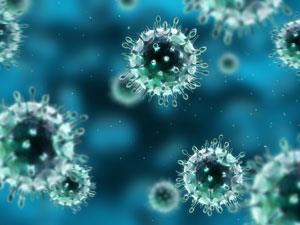
Annual flu epidemics are dominated by two main strains and result in up to 5 million severe cases each year, with up to 500,000 deaths. The typical human seasonal influenza A is type H3N2 or H1N1, also known as swine flu. Given the ease of transmission of this disease, it would help clinicians to have a rapid and reliable diagnostic test.
Currently, the gold standard for diagnosis is the quantitative real time polymerase chain reaction in which RNA is extracted from respiratory fluids and amplified. This test takes several hours to complete and is not perfect, detecting non-infectious RNA and producing false negatives owing to low viral quantities and sampling problems.
Maosheng Yao and colleagues from Peking University and the University of Science and Technology, Beijing, China, have devised an alternative test, which is rapid enough for a clinical setting. It uses a biosensor made from a grid of silicon nanowires which have been functionalised with influenza A antibodies to trap proteins from the virus. Proteins that become trapped on the nanowires change the electrical conductance of the device in a manner that is proportional to viral concentration. ‘Once the sensing system is ready, the entire detection time is about 2 minutes,’ says Yao.
They have previously used a similar device for the real-time detection of airborne influenza viruses by continuous air sampling,2 but their new system is for exhaled breath. Patients breathe into a cooled collection device, the liquid is diluted 100-fold to eliminate potential interferences from other breath components before being applied to the sensor. The sensor is able to detect as little as 29 viruses/µL.
Accurate positive or negative diagnoses were given for 90% of cases tested. However, the test is not universal, says Euan Tovey from the University of Sydney Medical School, Australia, who studies human respiratory viruses in breath. ‘If you are interested in what people in a population coming to a clinic are infected with then these methods will not look too good, unless you have multiplexed sensors. However, if you have – or fear – a nascent pandemic on your hands and you know exactly what you are looking for and you have the antibodies, then you have a possible way to do this.’
The next stage is to automate the test. ‘We are working on a handheld device for nanowire virus detection and it is doable,’ Yao says. ‘In our laboratory, we already have the electronics ready that can assemble the electrical signals from the nanowire into a CPU system that can send the detection signal remotely.’
References
- F Shen et al, Nano Lett., 2012, DOI: 1021/nl301516z
- F Shen et al, Environ. Sci. Technol., 2011, 45, 7473 (DOI: 10.1021/es1043547)






No comments yet